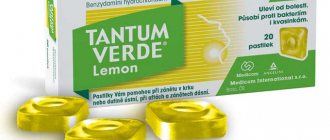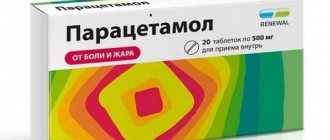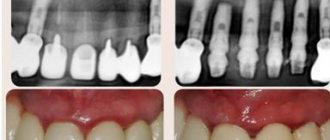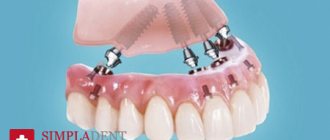Pharmacodynamics
Antifungal agent. A triazole derivative exhibits an antifungal effect by blocking the biosynthesis of ergosterol in the cell membrane of fungi. The “target” for the action of the drug is the enzyme 14-α-demethylase.
14-α-demethylase is part of a group of enzymes known collectively as cytochrome P450. All enzymes of the cytochrome P450 group contain hematinic iron-containing pigment. Fluconazole binds to the iron atom of the hematin group and inactivates 14-α-demethylase, which leads to disruption of ergosterol synthesis and accumulation of lanosterol and other sterols. Their inclusion in the membrane instead of ergosterol significantly disrupts the structure and function of the fungal cell membrane.
A decrease in ergosterol synthesis, as well as the accumulation of 14α-methylsterols, destroys the tightly packed acyl chains of fungal membrane phospholipids. Destabilization of the fungal membrane leads to dysfunction of membrane enzymes, including those involved in the electron transport chain, and ultimately to cell death.
Used for systemic mycoses: candidiasis, cryptococcosis, blastomycosis, histoplasmosis, coccidioidomycosis, as well as dermatomycosis. The relatively low toxic profile and high penetration into the cerebrospinal fluid make fluconazole the drug of choice for systemic candidiasis and cryptococcal meningitis. Because of complications associated with intrathecal amphotericin B, fluconazole is the first-line drug for coccidioidal meningitis. Although fluconazole is active against the causative agents of blastomycosis, histoplasmosis, and sporotrichosis, it is inferior in effectiveness against the causative agents of these infections to itraconazole. Fluconazole is not effective against aspergillosis.
Experience with the use of mycoflucan (fluconazole) in the treatment of pharyngomycosis
The problem of diagnosing and treating fungal diseases of the ENT organs remains relevant, since there is currently no tendency to reduce the proportion of this pathology in the structure of ENT diseases. Especially in recent years, the incidence of pharyngomycosis has increased. The mucous membrane of the pharynx, including the tonsils, serves as an entry point for fungal infections. The main causative agents of mycoses of the mucous membrane of the oropharynx are various types of yeast-like fungi of the genus Candida. The frequency of candidal pharyngitis and candidal tonsillitis has increased sharply over the past 10 years and accounts for 30-45% of the structure of infectious lesions of the pharynx and tonsils [1, 2]. The increase in the number of patients with pharyngomycosis is due to a significant increase in risk factors for their development, among which the leading positions are occupied by iatrogenic immunodeficiency states that arise as a result of massive antibiotic therapy, long-term use of glucocorticoid and immunosuppressive drugs for oncological diseases, blood diseases, AIDS, during organ transplantation, as well as in cases where there is a severe somatic pathology, such as diabetes. This creates optimal prerequisites for the development of pharyngomycosis, the causative agents of which are opportunistic fungi of the genus Candida, which can saprophyte on the mucous membrane of the oropharynx and in the environment and, under the above conditions, actively multiply and become pathogenic.
The problem of identifying and rational treatment of pharyngomycosis is becoming important not only due to their increasingly widespread distribution, but also because fungal chronic tonsillitis and pharyngitis are more severe than other inflammatory processes of the same localization, and can be the primary focus of disseminated visceral mycosis, or cause fungal sepsis. Despite the creation and introduction into clinical practice of a large number of local and a number of systemic antifungal drugs, the treatment of candidal pharyngitis and candidal tonsillitis is a rather complex task. At the same time, the selection of therapy for patients with developed fungal resistance to various antimycotic agents seems problematic. This is largely due to the natural resistance of certain species of fungi of the genus Candida to the antifungal drugs used in clinical practice. Most of them have a primarily fungistatic effect, which contributes to the formation of resistance to antimycotics [4].
Like other drugs of the azole group, fluconazole inhibits the formation of ergosterol, the main component of the cell membrane of fungi, by acting on the enzyme 14a-demethylase, which is part of the cytochrome P450 system. Violation of membrane biosynthesis causes the fungistatic effect of the drug, and in higher concentrations - damage to the membrane, during peroxidation and other processes leads to the death of the fungal cell (fungicidal effect). Unlike other azole drugs, fluconazole has high specificity for cytochrome P450-dependent fungal enzymes.
The purpose of this work was to evaluate the effectiveness of a new drug from the group of azoles, mycoflucan, in the treatment of candidal diseases of the oropharynx.
Mycoflucan (fluconazole), a representative of the class of triazole antifungal agents, is a powerful selective inhibitor of sterol synthesis in fungal cells. In order for inhibitors of ergosterol synthesis to begin to act, it is necessary to provide conditions for their penetration into the fungal cell, accumulation in sufficient concentration, movement to the microsomes on which the target enzyme is located, and communication with this enzyme [3]. Mikoflucan (fluconazole), developed (India), is highly effective against opportunistic mycoses. The high effectiveness and good tolerability of mycoflucan (fluconazole) when taken orally for the treatment of vulvovaginal candidiasis was noted by A. S. Ankirskaya and co-authors [5], S. N. Rogovskaya and co-authors [6], V. P. Smetnik and co-authors [3]. This drug has not been used for the treatment of pharyngomycosis. We conducted clinical trials of mycoflucan during the treatment of 44 patients with pharyngomycosis, of which 28 people had chronic fungal pharyngitis and 16 people had chronic fungal tonsillitis. The 28 patients with fungal pharyngitis included 16 women and 12 men aged 17 to 53 years. The duration of the disease ranged from 2 months to 7 years. Of the 16 patients with chronic fungal tonsillitis, 9 women and 7 men aged from 32 to 58 years were examined. The duration of the disease is from 3 to 15 years. All patients underwent general clinical and mycological examinations. Diagnosis of the disease included analysis of the results of the following studies:
- Study of the objective clinical picture of the disease in the affected area, i.e. in the place where the fungus lives, including a description of all clinical manifestations, as well as the type and nature of the pathological discharge.
- Study of the characteristics of the fungus in pathological material by microscopic examination of native and stained preparations.
- Elucidation of the cultural characteristics of the fungus, including a description of the initial colonies of fungi obtained by inoculating pathological material on various nutrient media.
- Identification of the type of fungus using a number of media and the study of both the microscopic picture of the fungus, the characteristics of its development, and its biological activity.
The clinical course of pharyngomycosis in such patients was characterized by a number of features. With chronic fungal tonsillitis, the main complaints of patients are sore throat, foreign body sensations, tingling, itching in the throat, burning sensation. Objectively: hyperemia, swelling of the arches (both anterior and posterior) without visible infiltration, which distinguishes a fungal process from a bacterial one; The tonsils themselves are hyperemic, the lacunae are enlarged, and the mucous membrane is partially eroded. One of the characteristic objective signs of mycotic disease of the tonsils is the presence of plaque on both the tonsils and the arches; sometimes the plaque spreads to other parts of the oropharynx. Plaques form not only during the period of exacerbation, but also in the absence of exacerbation of chronic tonsillitis. Most often they are small in size, dotted or island-shaped, located near the lacunae of the tonsils, they are whitish in color, curd-like in nature, soft, and easily removable. Fungal chronic tonsillitis is characterized by frequent exacerbations (from 2 to 10 times a year).
Fungal chronic pharyngitis differs from mycosis of the tonsils mainly in the localization of the pathological process. A characteristic clinical sign of chronic pharyngitis of fungal etiology is uneven hyperemia and infiltration of the mucous membrane of the posterior wall of the oropharynx. Against the background of subatrophy, an increase in the lateral ridges and a single, round-shaped infiltrative inflammatory process in the center are noted. The presence of small plaques is also a sign of mycotic pharyngitis. The nature of the inflammation is chronic, accompanied by frequent exacerbations.
As a result of mycological diagnosis, the causative agents of pharyngomycosis were identified in 44 patients. For fungal pharyngitis - Candida albicans (22), Candida krusei (2), Candida tropicalis (3), Candida guilliermondi (1). For fungal chronic tonsillitis - Candida albicans (10), Candida stellatoidea (3), Candida intermedia (2), Candida pseudotropicalis (1). All patients were prescribed the drug micoflucan orally at a dose of 50 mg.
1 time per day. The duration of treatment for chronic fungal pharyngitis was 14 days, for chronic fungal tonsillitis - 20 days.
Control clinical and mycological examinations were carried out 10 days, 1 month and 2 months after taking the drug. The treatment results are presented in the table.
Thus, as a result of treatment of 44 patients with pharyngomycosis with mycoflucan, cure, confirmed by mycological and clinical studies, was achieved in 29 (65%), improvement - in 14 (33%), no effect was noted in 1 (2%) patient. When analyzing the study results separately by nosological group (form of the disease), it was possible to establish that cure of the fungal process in candidal pharyngitis was achieved in 71% of patients, and in candidal tonsillitis - in 56%. This is understandable, since chronic fungal tonsillitis is a more severe disease than chronic fungal pharyngitis, and its therapy is fraught with great difficulties and is rarely quite effective when using other antimycotic drugs. A clear dependence of the effectiveness of treatment on the duration of the disease has been established. In all cases where therapy was unsuccessful (1) or complete cure was not achieved, the duration of the fungal process ranged from 7 to 15 years. The study did not reveal the relationship between the effectiveness of treatment and the type of fungus that causes the disease. Apparently, mycoflucan has a fungicidal effect on all Candida species that were identified as causative agents of pharyngomycosis in the present study.
It should be noted that the drug is well tolerated. No adverse reactions or manifestations of allergies were recorded when taking micoflucan.
Based on all of the above, we can conclude that, in general, a positive effect from treatment with mycoflucan in 44 patients with pharyngomycosis was achieved in 97% of patients.
We have also conducted comparative clinical studies of the effectiveness of another azole drug - diflucan (fluconazole). Currently, this systemic drug is widely used for various mycoses, mainly of candidal etiology.
Comparative clinical trials of diflucan (fluconazole) involved 27 patients with pharyngomycosis (15 women and 12 men aged 17 to 58 years) with a disease duration of 3 months to 8 years. The causative agents of the disease were Candida albicans (21), Candida stellatoidea (4), Candida krusei (2). All patients underwent general clinical and mycological studies, similar to those carried out during the examination of patients during mycoflucan therapy. Treatment with Diflucan was carried out in similar doses as during therapy with Mycoflucan, i.e. 50 mg 1 time per day. The duration of treatment was: for chronic fungal pharyngitis - 14 days, for chronic fungal tonsillitis - 20 days.
As a result of treatment of 27 patients with pharyngomycosis with the drug Diflucan, cure, confirmed by mycological and clinical studies, was achieved in 18 patients, improvement in 8 and without effect in one. Thus, cure was achieved in 66% of cases, and in general, a positive effect from treatment with Diflucan was obtained in 96% of patients with pharyngomycosis. Tolerability of the drug was assessed as good. Only three patients experienced abdominal symptoms in the form of nausea, dyspepsia, and diarrhea during treatment.
Thus, in a comparative analysis of the effectiveness of therapy with drugs of the azole class: mycoflucan and diflucan, similar results were obtained. The tolerability of micoflucan turned out to be higher, since in no case were there any adverse reactions while taking it, which significantly increases patient adherence to treatment with this drug.
Thus, the high effectiveness of the drug micoflucan (fluconazole) in the treatment of patients with pharyngomycosis (97% positive effect), its good tolerability and ease of use (once a day) allow us to consider this drug the most promising in the treatment of chronic tonsillitis and chronic pharyngitis of candidal etiology .
Literature
- Kunelskaya V. Ya. Mycoses in otorhinolaryngology. - M.: Medicine, 1989. - 320 p.
- Starosvetsky B. M. Chronic pharyngitis of fungal etiology: Dis. ...cand. honey. Sci. - M., 1990.
- Smetnik V.P., Marchenko L.A., Chernukha G.E. Experience with the use of Mycoflucan (fluconazole) for the treatment of vulvovaginal candidiasis // Attending Physician. - 2004. - No. 2. - P. 2 - 3.
- Malikov V. E., Zharikova N. E., Romanovskaya T. A., Rasskazov D. N. Etiology of vaginal candidiasis and the problem of resistance to antifungals // Contraception and women's health. - 2002. - No. 1. - P. 9 - 16.
- Ankirskaya A. S., Muravyova V. V., Demidova E. M., Karpova O. Yu., Zaidieva Ya. Z., Fursova S. A. Diflucan 150: experience in the treatment and prevention of vaginal candidiasis // Bulletin of Dermatology and Venereology . - 1998. - No. 3. - P. 65 - 67.
- Rogovskaya S.N., Prilepskaya V.N., Bayramova G.R. Experience of using Diflucan in the treatment of genital candidiasis // Bulletin of Dermatology and Venereology. - 1997. - No. 1. - P. 100 - 101.
V. Ya. Kunelskaya, Doctor of Medical Sciences, Professor of City Clinical Hospital No. 31, Moscow
Pharmacokinetics
After oral administration, fluconazole is well absorbed; food intake does not affect the rate of absorption of fluconazole, its bioavailability is 90%.
The time of maximum concentration after oral administration, on an empty stomach, 150 mg of the drug is 0.5-1.5 hours and is 90% of the plasma concentration when administered intravenously at a dose of 2.5-3.5 mg/l. The half-life of fluconazole is 30 hours. Communication with plasma proteins is 11-12%. Plasma concentration is directly dependent on dose. 90% level of equilibrium concentration is achieved by 4-5 days of treatment with the drug (when taken 1 time / day).
Administration of a “loading” dose (on the first day), 2 times higher than the usual daily dose, allows one to achieve a concentration level corresponding to 90% of the equilibrium concentration by the second day.
Fluconazole penetrates well into all biological fluids of the body. The concentration of the active substance in breast milk, joint fluid, saliva, sputum and peritoneal fluid is similar to that in blood plasma. Constant values in vaginal secretions are achieved 8 hours after oral administration and are maintained at this level for at least 24 hours.
The pharmacokinetics of fluconazole depends significantly on the functional state of the kidneys, and there is an inverse relationship between the half-life and creatinine clearance. After hemodialysis for 3 hours, the concentration of fluconazole in plasma decreases by 50%.
Indications for use
Indications for the use of Fluconazole capsules are:
- Cryptococcal infection, including specific damage to the membranes of the brain (cryptococcal meningitis) in patients with immunodeficiency or with a normal state of functional immune activity.
- A severe form of candidiasis with generalization of the infectious process and damage to a significant amount of tissue (mucous membranes of various organs, skin, peritoneum, endocardium, eyes, respiratory and urinary tracts). In most cases, the infection develops against the background of a pronounced decrease in the functional activity of the immune system during malignant neoplasms, treatment with cytostatics, immunosuppressants, as well as in patients who have been in the intensive care unit for a long time.
- Localized candidiasis, developing on the mucous membranes of the oral cavity and upper digestive tract, on the structures of the urogenital tract - the drug in dosage form for systemic use is used in case of insufficient effectiveness of ointment or cream for topical use.
- Dermatomycosis, which is localized on the skin of the feet, torso, and groin area.
- Pityriasis (multi-colored) lichen.
- Fungal infection of the nail plates (onychomycosis).
- Deep endemic mycoses, which may include paracoccidioidomycosis, coccidioidomycosis, histoplasmosis in patients with normal functional immune activity.
The drug is also used to prevent the development of fungal infections in patients with normal or impaired immunity.
Directions for use and dosage
Fluconazole capsules are intended for oral administration. They should not be chewed and should be taken with sufficient liquid. The dosage and regimen of use of the drug depend on medical indications:
- Cryptococcal meningitis in adults and children over 15 years of age - on the first day the drug is prescribed at a dosage of 400 mg per day, then switched to a maintenance dose of 200 mg per day.
- Prevention of exacerbation of cryptococcal meningitis in patients with severe immunodeficiency, in particular against the background of AIDS - after completion of the course of primary therapy aimed at maximizing the destruction of the causative agent of the disease, the drug is prescribed in a daily dosage of 200 mg.
- Generalized candidiasis - in the first days, 400 mg per day is prescribed, then switch to 200 mg per day. If there is no sufficient therapeutic effect, switch again to a dose of 400 mg.
- Candidiasis localized on the mucous membrane of the oral cavity and esophagus - 150 mg once a day for 14 to 28 days (depending on the speed of achieving a therapeutic result).
- Vaginal candidiasis in women (thrush) - 150 mg once, to prevent exacerbation, the drug is repeated after 1 month. Sometimes, if there is insufficient effectiveness and a chronic course of this form of candidiasis, the doctor sets the dosage and regimen of use, including the duration of the course of therapy, individually.
- Prevention of candidiasis of various localizations - the dosage is set by the doctor individually, it can vary from 50 to 400 mg per day.
- Pityriasis versicolor – 300 mg per day once a week for 3 weeks, this regimen can be adjusted by the attending physician if necessary.
- Dermatomycosis, including lesions of the skin of the feet - 150 mg once a week for 3-4 weeks.
- Onychomycosis – 150 mg once a week, the course of treatment continues until the nail plate is completely replaced, and can be repeated if necessary.
- Deep endemic mycoses - the dosage of the drug varies from 200 to 400 mg per day, the duration of the course of therapy can reach 24 months.
The regimen for using Fluconazole capsules in children has certain similarities with adults. An important condition is to avoid exceeding the dose of 400 mg per day. In most cases, the regimen of use, dosage and duration of therapy are determined individually by the doctor.
Fluconazole in the treatment of candidiasis
IN
In recent years, the prevalence of fungal diseases has increased significantly, which is associated with the widespread and not always rational use of antibiotics, cytostatics, corticosteroid hormones, an increase in the frequency of nosocomial infections, and the development of immunodeficiency states.
The most common candidiasis in clinical practice is caused by the yeast-like fungus Candida albicans.
. The development of candidiasis is promoted by both local and systemic factors. For example, with skin candidiasis, the presence of maceration, diaper rash, and paronychia is of great importance. Most often, candidiasis occurs in patients with diabetes mellitus, HIV infection, hematological malignancies, as well as with long-term and uncontrolled use of antibiotics and corticosteroid hormones.
Clinical manifestations
candidiasis is characterized by damage to the mucous membranes of the oral cavity (stomatitis), esophagus (esophagitis), urogenital tract, skin and nails. The most severe manifestations are caused by hematogenous dissemination (endocarditis, meningitis, arthritis, osteomyelitis, brain abscess).
Skin lesions with candidiasis are characterized by the appearance of vesicles and pustules, which quickly open and erosion forms in their place. The lesions are dark red in color, shiny, with a moist surface, clear boundaries and a strip of exfoliating stratum corneum of the epidermis. In children, the process can spread to the skin of the thighs, buttocks, and abdomen. The appearance of interdigital candidiasis erosion is often observed, most often between the III and IV IV and V fingers of the hands, less often of the feet. Subjective sensations include itching, burning, and sometimes pain in the affected area.
Candidiasis of the oral mucosa is characterized by damage to the mucous membranes of the cheeks, tongue, gums, and corners of the mouth. The process begins with redness of the mucous membrane, then white deposits appear, merging to form large films. At first, the films separate easily, then become dense. Cracks with pronounced maceration form in the corners of the mouth, and there is a burning sensation and pain when eating.
Candidiasis of the nail folds and nails begins with redness and swelling of the fold at the base of the nail, which swells and when pressed, pus or ichor is released. When a fungal infection penetrates the nail plate, it becomes yellowish and dull.
Urogenital candidiasis can occur in acute or chronic form. The acute form is characterized by redness of the mucous membrane, the presence of blisters, pinpoint erosions and the presence of cheesy or flaky, creamy discharge. The affected mucosa tends to bleed and develop cracks in the area of the vaginal vestibule and perineum. Itching is characteristic of candidiasis of the vulva, labia majora and minora, and intensifies during menstruation, sexual intercourse and prolonged walking. Chronic urogenital candidiasis is characterized by infiltration and cracks in the area of the clitoris, anus, perineum and inguinal folds. Candidiasis of the urinary organs occurs in the form of urethritis, cystitis, and pyelonephritis. Candidal cystitis is characterized by frequent urination and pain in the suprapubic region. With urethritis, mucopurulent discharge of white or yellow color appears, mainly in the morning. Itching and burning intensify when urinating.
Candidal balanoposthitis is manifested by redness, swelling of the glans penis, itching and burning when urinating. Yellowish films and a loose cheesy mass form on the contacting surfaces of the head and foreskin.
With candidiasis of the digestive tract, damage to the esophagus, stomach, intestines and gallbladder develops, which is associated with the spread of infection from the mouth and pharynx. Patients complain of nausea, belching, vomiting, loose stools mixed with mucus, and abdominal pain. The mucous membrane is hyperemic, eroded, covered with multiple white or yellow deposits.
Candidiasis of the central nervous system occurs as meningitis and develops as a result of hematogenous dissemination of the infection. There are no specific clinical manifestations; fungal infection is often confirmed only at autopsy.
Hematogenous dissemination of fungal infection C. albicans
accompanied by fever, toxic and focal manifestations (retinal abscess, endocardial candidiasis, arthritis, meningitis, pneumonia).
Candidal sepsis develops when the mucous membrane of the oral cavity and esophagus is damaged in young children and in patients with diabetes mellitus and HIV infection. The clinical picture is dominated by symptoms of intoxication, sudden rises and falls in temperature, and a decrease in blood pressure.
Diagnosis of candidiasis
based on clinical manifestations (itching, burning, plaque, swelling of the mucous membranes, hyperemia and others), microbiological tests (
in vitro
, histology and detection of specific antigens in the immunofluorescence reaction with monoclonal antibodies against
C. albicans
, detection of specific antibodies by enzyme immunoassay).
For the treatment of candidiasis
use antimycotic drugs of systemic action (polyene antimycotics, triazole derivatives, pyrimidine derivatives and allylamines).
Among triazole derivatives, the leading place is occupied by fluconazole (Mikosist)
, which is a selective inhibitor of sterol synthesis in the fungal cell.
Fluconazole is highly active against C. albicans
: Only about 3-5% of
C. albicans
are resistant to fluconazole or have intermediate sensitivity.
Candida krusei
and certain strains
of Candida glabrata
are resistant to fluconazole.
After oral administration of fluconazole, more than 90% of the drug enters the systemic circulation. It penetrates perfectly into saliva, sputum, urine and other tissue fluids. Fluconazole is excreted primarily in the urine unchanged. The half-life with normal renal function is 27-34 hours. Mikosist (fluconazole) is available in two forms - for intravenous and oral administration, the oral form has very good bioavailability.
Fluconazole is the drug of choice for candidiasis of the urinary tract, esophagitis, peritonitis, wound infection, and is used in the treatment of febrile neutropenia. For urogenital candidiasis, fluconazole is prescribed in a dose of 50 to 200 mg per day for 7-28 days. For candidal esophagitis, a dose of 400 mg is recommended, followed by a reduction to 200 mg.
Fluconazole is considered the drug of choice in the systemic treatment of oral candidiasis. For oropharyngeal candidiasis, fluconazole is prescribed to adults at a dose of 100 mg once a day for 7-14 days. For atrophic candidiasis of the oral cavity, it is preferable to prescribe fluconazole at a dose of 50 mg per day for 14 days. When C. albicans
the dose of fluconazole is increased to 400–800 mg/day. With frequent relapses, it is possible to prescribe pulse therapy with fluconazole (150 mg once a week). Intermittent circuits help prevent the development of resistance.
For cutaneous candidiasis, the effective dose of fluconazole ranges from 50 to 100 mg per day for 14-28 days. For candidiasis of the skin of the feet, we recommend a dose of 150 mg per day for 14-28 days.
The choice of treatment for candida paronychia depends on the stage of the process, the severity of inflammation, the presence of candidiasis of the skin or mucous membranes, and onychomycosis. Fluconazole is prescribed for concomitant onychomycosis, a combination of paronychia with candidiasis of the skin or mucous membranes. In these cases, local therapy alone does not guarantee cure and elimination of the pathogen. Fluconazole is prescribed 150 mg once a week for 2–6 weeks. Systemic therapy can be combined with treatment with local antiseptics or antifungals.
To prevent candidiasis during antibiotic therapy, the dose of fluconazole is from 50 to 300 mg per day once, depending on the risk of developing a fungal infection.
In children, the daily dose is 3 mg/kg body weight per day. On the first day, it is advisable to prescribe a loading dose of 6 mg/kg per day. The duration of therapy in children ranges from 1 to 14 days, depending on the severity of the candidiasis infection.
Fluconazole is well tolerated, adverse reactions occur mainly from the gastrointestinal tract (abdominal pain, nausea, flatulence), headache and skin rashes are less common.
Contraindications for use
Medical contraindications for taking Fluconazole capsules are pathological and physiological processes in the patient’s body, which include:
- Simultaneous use of the drug terfinadine, astemizole, as well as other drugs that lead to prolongation of the QT interval on the electrocardiogram (especially when using Fluconazole capsules in a daily dosage exceeding 400 mg).
- Children up to 4 years old.
- Individual intolerance to the main active ingredient or additional substances of this medication.
The drug is used with caution in case of concomitant liver or renal failure, the appearance of a skin rash in patients with generalized systemic fungal infections, simultaneous use of the drug in a daily dosage of less than 400 mg with terfenadine, chronic alcoholism, in the case of the use of drugs that have a hepatotoxic effect, and also in patients with a high risk of developing arrhythmia (disturbance in the rhythm and frequency of heart contractions) against the background of organic heart pathology, electrolyte imbalance in the body. The drug is also used with caution in pregnant women. Before prescribing Fluconazole capsules, the doctor makes sure that the patient has no contraindications.
Contraindications
hypersensitivity to the drug (including a history of other azole antifungal drugs);
simultaneous use of terfenadine (while constantly taking fluconazole at a dose of 400 mg/day or more) or astemizole, as well as other drugs that prolong the QT interval;
children under 4 years of age.
With caution: liver and/or renal failure, the appearance of a rash during the use of fluconazole in patients with superficial fungal infection and invasive/systemic fungal infections, simultaneous use of terfenadine and fluconazole at a dose of less than 400 mg/day, simultaneous use of potentially hepatotoxic drugs, alcoholism, potentially proarrhythmogenic conditions in patients with multiple risk factors (organic heart disease, electrolyte imbalance, concomitant use of drugs that cause arrhythmias), pregnancy.
Side effects
Side effects are possible when using the drug Fluconazole
- From the immune system: hypersensitivity (cross with all azoles), other anaphylactic, anaphylactoid and allergic reactions (including Stevens-Johnson syndrome, toxic epidermal necrolysis, urticaria).
- From the nervous system: headache, dizziness, peripheral neuropathy, paresthesia, excessive fatigue, rarely - convulsions.
- From the digestive system: loss of appetite, dryness of the oral mucosa, changes in taste, abdominal pain, vomiting, nausea, diarrhea, flatulence, rarely - impaired liver function (jaundice, hepatitis, hepatonecrosis, hyperbilirubinemia, increased activity of alanine aminotransferase, aspartate aminotransferase, increased alkaline phosphatase activity, hepatocellular necrosis), including severe.
- From the hematopoietic organs: rarely - leukopenia, thrombocytopenia (bleeding, petechiae), neutropenia, agranulocytosis.
- From the cardiovascular system: increased duration of the QT interval, ventricular fibrillation/flutter, torsades de pointes.
- Metabolism: hypercholesterolemia, hypertriglyceridemia, hypokalemia, hyperglycemia.
- From the musculoskeletal system: myalgia.
- Other: weakness, asthenia, peripheral edema, neutropenia, itching, pulmonary edema, fever, excessive sweating, vertigo.
Use during pregnancy and lactation
There have been no adequate and controlled studies of the use of fluconazole in pregnant women. Several cases of multiple congenital defects have been described in newborns whose mothers received high-dose fluconazole therapy (400-800 mg/day) for most or all of the first trimester. The following developmental disorders were noted: brachycephaly, impaired development of the facial part of the skull, impaired formation of the cranial vault, cleft palate, curvature of the femurs, thinning and elongation of the ribs, arthrogryposis and congenital heart defects. Currently, there is no evidence of a connection between the listed congenital anomalies and the use of low doses of fluconazole (150 mg once for the treatment of vulvovaginal candidiasis) in the first trimester of pregnancy.
During pregnancy, the use of fluconazole should be avoided, except in cases of severe and potentially life-threatening fungal infections when the expected benefit of treatment to the mother outweighs the possible risk to the fetus. Women of childbearing age should use contraception.
Since the concentration of fluconazole in breast milk and plasma is the same, the use of the drug during breastfeeding is contraindicated.
Interaction
When fluconazole is used with warfarin, the PT increases (by an average of 12%). In this regard, it is recommended to carefully monitor PT parameters in patients receiving the drug in combination with coumarin anticoagulants.
Fluconazole increases the plasma half-life of oral hypoglycemic agents - sulfonylurea derivatives (chlorpropamide, glibenclamide, glipizide, tolbutamide) in healthy people. The combined use of Fluconazole and oral hypoglycemic agents in patients with diabetes is allowed, but the doctor must keep in mind the possibility of developing hypoglycemia.
Concomitant use of Fluconazole and phenytoin may lead to an increase in plasma phenytoin concentrations to a clinically significant extent. Therefore, if it is necessary to use these drugs together, it is necessary to monitor the concentration of phenytoin with dose adjustment in order to maintain drug levels within the therapeutic interval.
Combination with rifampicin leads to a decrease in AUC by 25% and a shortening of the plasma half-life of fluconazole by 20%. Therefore, for patients receiving rifampicin at the same time, it is advisable to increase the dose of Fluconazole.
It is recommended to monitor the concentration of cyclosporine in the blood in patients receiving Fluconazole, because the use of fluconazole and cyclosporine in patients with a kidney transplant (taking Fluconazole at a dose of 200 mg/day) leads to a slow increase in the concentration of cyclosporine in plasma.
Patients who receive high doses of theophylline or who are at risk of developing theophylline toxicity should be monitored for early detection of symptoms of theophylline overdose, because taking fluconazole leads to a decrease in the average rate of clearance of theophylline from plasma.
With the simultaneous use of fluconazole with terfenadine and cisapride, cases of adverse reactions from the heart, including paroxysms of ventricular tachycardia (torsades de points), have been described.
Concomitant use of fluconazole and hydrochlorothiazide can lead to an increase in plasma concentrations of fluconazole by 40%.
There are reports of interaction between fluconazole and rifabutin, accompanied by an increase in serum levels of the latter. Cases of uveitis have been described with the simultaneous use of Fluconazole and rifabutin. Patients receiving rifabutin and fluconazole simultaneously should be carefully monitored.
In patients receiving a combination of fluconazole and zidovudine, an increase in the concentration of zidovudine is observed, which is caused by a decrease in the conversion of the latter to its main metabolite, so an increase in the side effects of zidovudine should be expected.
Increases the concentration of midazolam, and therefore increases the risk of developing psychomotor effects (most pronounced when fluconazole is used orally than intravenously).
Increases the concentration of tacrolimus, which increases the risk of nephrotoxicity.
special instructions
Treatment with fluconazole may be initiated pending the results of cultures and other laboratory tests, but therapy should be adjusted accordingly once the results of these tests are available.
During treatment, it is necessary to monitor blood counts, kidney and liver function. If renal and liver dysfunction occurs, you should stop taking the drug.
Treatment must be continued until clinical and hematological remission occurs (an exception is acute vaginal candidiasis). Premature cessation of treatment leads to relapses.
People with AIDS are more likely to develop severe skin reactions when taking many drugs. In cases where a rash develops in patients with a superficial fungal infection and is assessed as definitely related to fluconazole, the drug should be discontinued. If a rash occurs in patients with invasive/systemic fungal infections, they should be closely monitored and fluconazole should be discontinued if bullous changes or erythema multiforme occur.
In rare cases, the use of fluconazole has been accompanied by toxic changes in the liver, including death, mainly in patients with serious concomitant diseases. In the case of hepatotoxic effects associated with fluconazole, there was no obvious dependence on the total daily dose, duration of therapy, gender and age of the patient. The hepatotoxic effects of fluconazole were usually reversible; its signs disappeared after cessation of therapy. If clinical signs of liver damage that may be associated with fluconazole appear, the drug should be discontinued.









